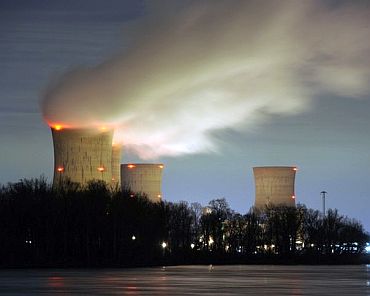

The original Chernobyl health impact report conducted by UN agencies and published in 1988, did address the global exposure to radiation in response to the accident, and estimated it would ultimately correspond to 30,000 or more cancer deaths, Lyman said. Lyman said the Forum's report based its cancer death predictions only on cases within the former Soviet Union, ignoring exposure to populations in other parts of Europe and the northern hemisphere. In a Greenpeace report published in 2006, researchers estimated the predicted death toll at around 90,000 - nearly 23 times the number suggested by the Chernobyl Forum report.Įdwin Lyman, a physicist and director of Nuclear Power Safety with the US-based Union of Concerned Scientists, said he, "doesn't consider the Chernobyl Forum report to be authoritative." One of them is Massachusetts Institute of Technology (MIT) professor Kate Brown.īrown has conducted extensive research on the impact radiation has had on people's health in Ukraine and surrounding countries since the 1986 accident. Some experts say the impact of the disaster was concealed by Soviet officials in an attempt to downplay its severity.

Did Soviet officials try to downplay the aftermath of Chernobyl? Over 30 plant workers died in the three months following the disaster at the Soviet power station, Chernobyl, as a direct result of the meltdown.Ī report published by the Chernobyl Forum, a group of UN agencies formed in 2003 to assess the health and environmental consequences of the accident, suggested in 2006 that it will cause at least 4,000 cancer deaths in the long term, although that estimate is contested. The Chernobyl meltdown released radiation across Europe, affecting the lives of humans, plants and animals throughout the region. When occupying forces seized the plant in March 2022, experts tried to weigh up how a potential accident there would compare with the 1986 Chernobyl disaster - an event that for decades marked the worst nuclear power accident in history. In 2022, it became the first active nuclear plant in history to continue operations in the midst of a war. With six reactors on site, Zaporizhzhia is Europe's largest nuclear power plant. Ukraine's Zaporizhzhia power plant is located close to the country's southern border. The city of Pripyat, located a few kilometers from the Chernobyl nuclear power plant, before 1986 Image: Sean Gallup/Getty Images Zaporizhzhia under occupation In the next article in this series, we explain the health effects linked to the detonation of nuclear weapons at Hiroshima and Nagasaki, and also look at what could happen if nuclear weapons were detonated in today's world. When people think about nuclear threats and the war in Ukraine, most consider two possibilities: What would happen if an accident occurred at a Ukrainian nuclear plant? And what would happen if a nuclear weapon were deployed?įor this article, we talked to experts about the health impact the Fukushima and Chernobyl disasters had on surrounding populations, and asked them to explain the degree to which those disasters might provide a framework for our current understanding of risk at Zaporizhzhia. Nuclear poses two threats in the Russia-Ukraine war More than 1,500 people were reported to have been forcibly evacuated by Russian forces in the area in May. Grossi said June 6 that there was "no immediate risk to the safety of the plant" and that there were "a number of alternative sources of water." That backup power supply is itself vital for cooling reactor fuel at the plant and preventing a nuclear meltdown, which would release dangerous thermal energy and radiation into the atmosphere. The explosion at the Kakhovka dam came after missile strikes in March 2023 had caused outages and left the plant running on those emergency diesel generators. The water is essential for cooling residual heat from the ZNPP reactors and its spent fuel ponds, and for cooling of emergency diesel power generators at the site. In May, IAEA Director General Rafael Grossi said that the general situation in the area near the ZNPP was becoming "increasingly unpredictable and potentially dangerous."Ī month later in June, when the Kakhovka dam was blown up, the IAEA said the severe damage had lead to "a significant reduction in the level of the reservoir used to supply cooling water to the ZNPP." The ZNPP is located in the southeast of the country on the banks of the Dnipro river.

Russia has controlled the ZNPP since March 2022, just weeks after the war started. The International Atomic Energy Agency has repeatedly raised concerns about the war in Ukraine and the threats it poses to the Zaporizhzhia nuclear power plant (ZNPP), and the risks it sees for the people who live in the area.


 0 kommentar(er)
0 kommentar(er)
